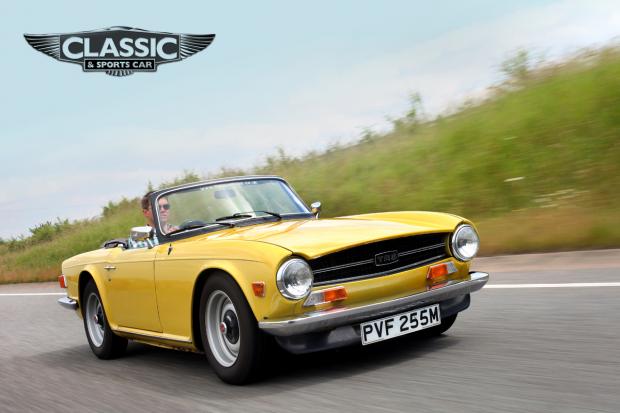
As prices for its predecessor go stratospheric, Graeme Hurst champions the Triumph TR6, which offers the same thrills for a fraction of the cost.
There’s a certain irony about the impact of evolution in car design. The very decisions that were taken 40 or 50 years ago to improve a model have often resulted in a drop in today’s values. When Jaguar modified the floorpan of its seminal E-type just a year into production, the alterations unquestionably made the car more comfortable to drive, yet it’s the cramped ‘flat-floor’ cars that now command a premium. Likewise over at Lotus, the Hethel engineers’ attempts to update the Elan – first with bigger brakes and plusher trim, then fixed-frame electric windows and a better hood – no doubt improved the model, but it’s the purist S1 that enthusiasts most covet.

Those paradoxes are largely down to those old fundamentals of the free market economy, supply and demand, but they aren’t limited to prestige marques. Adding a fuel-injected straight-six to the Triumph TR5 gave the long-running and popular TR range a welcome boost in performance, but it was really only a stop-gap until the styling could be brought up to date with the mechanically identical TR6 in 1969. With its sharper, more fashionable lines complementing the TR5’s grunt, the TR6 was an instant success that secured Triumph’s future, with 13,912 UK-spec TR6s – and a staggering 77,938 US-spec carburetted cars – rolling out of Triumph’s Canley plant over six years. Some 34 years since the model’s demise, however, that rampant production total has merely served to fuel interest in the 2947 TR5s that left the line in just over a year following the model’s August ’67 launch. Which is why 5 values have rocketed in recent years, with good cars selling for £25k-plus and concours dealer fare at up to twice that sum.

All of which means that the 5’s successor is a bargain option today: £8-9000 should land you a reasonable TR6, with even the sharpest re-shelled examples only hitting mid-teens. What’s more, with its stonking perfomance and simple, handsome lines, the Triumph epitomises all that’s great about rugged, thrilling classic British sports cars. To find out if that reputation holds true, we have a thoroughly sorted TR for a blast across the West Midlands. Once the great bastion of the UK car industry – and this car’s birthplace – it’s equally steeped in landmarks of British history. More importantly, it boasts some fantastic roads on which to stretch the TR’s legs.










